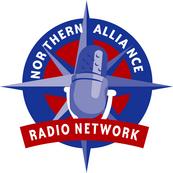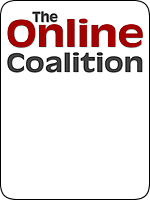
« News You'll Never See | Main | France's Rushdie Moment »
Finally, some of the mainstream media has taken an interest in the Feith memo, as reported by Stephen Hayes in the Weekly Standard. Unfortunately, Newsweek's Michael Isikoff and Mark Hosenball wrote a report that seemed to care more about the fact that the Weekly Standard is owned by Rupert Murdoch than in the evidence at hand. Here's the second paragraph:
CASE CLOSED blared the headline in a Weekly Standard cover story last Saturday that purported to have unearthed the U.S. government’s “secret evidence of cooperation” between Saddam and bin Laden. Fred Barnes, the magazine’s executive editor, touted the magazine’s scoop the next day in a roundtable chat on “Fox News Sunday.” (Both the Standard and Fox News Channel are owned by the conservative media baron Rupert Murdoch.) [bold emphasis mine -- CE] “These are hard facts, and I’d like to see you refute any one of them,” he told a skeptical Juan Williams of National Public Radio.
Specific facts and critical arguments don't show up until after Isikoff and Hosenball make sure you know that this is all a Murdoch-inspired, if not Murdoch-financed, attempt to smear the good names of Osama bin Laden and Saddam Hussein. When they do get down to facts, they don't seem to do a good job of getting them right, as Stephen Hayes points out in his rebuttal:
The Newsweek story goes on: "While Hayes's story insists 'the bulk of the reporting . . . contradicts [Abdallah's] claim,' the actual examples cited in the memo to buttress this point are less than persuasive." The Newsweek writers offer two examples--allegations that Mohammed Atta met with an Iraqi intelligence officer in Prague and reporting from Ibn al-Shayk al-Libi, a senior al Qaeda operative who was captured in Pakistan and turned over to U.S. custody in early January 2002.The most recent alleged Atta meeting, in April 2001, is disputed, a fact THE WEEKLY STANDARD article makes clear. Isikoff and Hosenball claim that the intelligence is bogus, as U.S. investigators have "not unearthed a scintilla of evidence that Atta was even in Prague at the time of the alleged rendezvous." (See Edward Jay Epstein's recent report in Slate for a fuller account of the controversy over this meeting.)
Czech intelligence, however, reports not one but four meetings between Iraqi intelligence and Atta. The CIA can confirm two Atta visits to Prague, but "data surrounding the other two--on 26 Oct 1999 and 9 April 2001--is complicated and sometimes contradictory and CIA and FBI cannot confirm Atta met with the IIS." This disclaimer was reported in THE WEEKLY STANDARD article, which also noted that the Czech government continues to stand by its reporting.
When I read the original Hayes article, it was very clear that Feith and Hayes spoke about four visits, not one, and was also clear that the April 2001 visit alleged by Czech intelligence had been the most difficult to verify. However, the Newsweek article never mentions any other visits by Atta to Prague, even though these visits were crucial to understanding the memo, as explained by Edward Jay Epstein in Slate, hardly a Murdoch co-conspirator:
It was known, however, that Atta had business in Prague prior to the 9/11 attack. Kmonicek, the deputy foreign minister, had found a paper trail of passport records showing that Atta had applied for a visa to visit the Czech Republic on May 26, 2000 in Bonn, Germany. Atta must have had business there, since he could have transited through the Czech Republic on Czech Air without a visa. ...When Atta learned in Hamburg that his Czech visa would not be ready until May 31, he nevertheless flew on May 30 to the Prague International Airport, where he would not be allowed to go beyond the transit lounge. Although a large part of this area is surveiled by cameras, he managed to spend all but a few minutes out of their range. After some six hours, he then caught a flight back to Hamburg. From this visaless round trip, Czech intelligence inferred that Atta had a meeting on May 30 that could not wait, even a day—and that whoever arranged it was probably familiar with the transit lounge's surveillance. Finally, the BIS determined that the Prague connection was not limited to a single appointment since Atta returned to Prague by bus on June 2 (now with visa BONN200005260024), and, after a brief wait in the bus station, disappeared for nearly 20 hours before catching a flight to the United States.
Why was all this important -- Atta's movements between Hamburg and Prague, and on which days he went where?
The Czechs reviewing these visits in retrospect further assumed that Atta's business in Prague was somehow related to his activities in the United States, given that large sums of laundered funds began to flow to the 9/11 conspiracy in June 2000, after Atta left Prague. Even more ominous, if the BIS's subsequent identification of Atta in Prague was accurate, then some part of the mechanism behind the activities of hijacker-terrorists may have been based in Prague at least until mid April 2001.
So when Isikoff and Hosenball only focus on the one meeting, which Hayes and the Feith memo both agree was the murkiest, to discredit the entire memo without ever mentioning the other unusual visits for which there is ample evidence, it implies less sloppiness than outright, deliberate obtuseness. Hayes has more ammunition as well:
The Newsweek authors also cite an unnamed "U.S. official" who claims that the intelligence in the memo was selectively presented and "contradicted by other things." To support this argument, Isikoff and Hosenball cite a late 1998 trip to Afghanistan by Faruq Hijazi. Hijazi served Saddam Hussein both as deputy director of Iraqi intelligence and later as ambassador to Turkey. At that meeting, the authors contend, bin Laden rejected an Iraqi offer of asylum. Their source is Vince Cannistraro, a knowledgeable former CIA counterterrorism official--the kind of expert whose views should be taken very seriously. He may be right. And if his understanding of the meeting's outcome is accurate, that information certainly should have been included in the Feith memo.But stop for a moment and consider what this analysis means. It demonstrates that at the very least, Saddam Hussein was willing to give Osama bin Laden asylum in Iraq. Is this not precisely the kind of collusion the administration cited as it made its case for war? If such a distinguished skeptic of the links believes that Saddam Hussein would have offered bin Laden asylum, why is it so hard to believe--to take one example from a "well-placed source" cited in the Feith memo--that Hussein sent his intelligence director to bin Laden's farm in 1996 to train the al Qaeda leader in explosives? Or, to take another from a "regular and reliable source" mentioned in the memo, that bin Laden's No. 2, Ayman al Zawahiri, "visited Baghdad and met with the Iraqi Vice President on 3 February 1998"?
These concerns never occurred to Isikoff and Hosenball, who treat the Feith memo as a prosecution, a law-enforcement case where anything less than guilt beyond a reasonable doubt is a lie. But intelligence gathering, and war in general, is not law enforcement, and evidentiary parsing such as this is useless. Again, you have to look at context, which is what Hayes has consistently tried to provide.
Prior to 9/11, the Newsweek approach may have made some sense, if you preferred to combat terrorism using the Clintonian law-enforcement approach. This evidence may or may not have supported an indictment (which the Reno Justice Department actually got, and which I note Isikoff and Hosenball never mention), and so sitting and waiting to see if any further information could be developed was certainly an option, and it was the one we used. After 9/11, it became apparent that the law-enforcement indictment process was not going to secure Americans against attack, and that a severe threat faced the US. The best intelligence we had indicated strong links between Saddam Hussein, who was in the middle of defying 16 UNSC resolutions and the cease-fire agreement that halted Gulf War hostilities, and al-Qaeda, who had just murdered 3,000 American civilians in the worst foreign attack in our history. Waiting around for more information to develop would mean allowing more collusion between Saddam and Osama, while Saddam kept refusing to account for massive amounts of chemical and biological agents. Afghanistan was the primary target, since it actively housed Osama's gang. But Saddam had to be next.
Was the intelligence accurate? We won't know that until we get a complete airing of the data, without having to trip over mainstream media who don't want to tell the whole story and who keep trying to discredit Hayes with half-truths and crucial omissions. CNN's interview with James Woolsey, CIA chief under Clinton, has him saying that the evidence he's seen makes the connection theory a "slam dunk". George Tenet and Colin Powell, who are supposed to be the skeptics of this administration, have both enthusiastically pushed this interpretation of the intelligence they've seen. The Justice Department, in 1998, thought the evidence strong enough that they returned an indictment against Osama which referenced an agreement between him and Saddam. Maybe it isn't "case closed," as Hayes proclaimed, but as Glenn Reynolds said yesterday, we'd settle for mainstream media acknowledging that it's at least "case open." That won't happen until the blogosphere keeps pushing for an in-depth review of all data possibly linking al-Qaeda to Iraq.
UPDATE: LT Smash has an excellent extended post into this matter. His post goes through some different points of contention than I've addressed here, so be sure to read all the way through his stuff, and check out all of his embedded links. His conclusion -- "The war in Iraq was, in fact, a legitimate act of self-defense by the United States of America" -- seems to be borne out by the intelligence we're finally getting a chance to see.
Demosophia also expresses his disgust with the Isikoff/Hosenball article here. He does a fine job of noting the ridiculously poor job those authors did in actually reading and understanding the article.
Sphere ItTrackback Pings
TrackBack URL for this entry is

captain*at*captainsquartersblog.com


My Other Blog!
E-Mail/Comment/Trackback Policy
Comment Moderation Policy - Please Read!
Skin The Site








Hugh Hewitt
Captain's Quarters
Fraters Libertas
Lileks
Power Line
SCSU Scholars
Shot In The Dark
Northern Alliance Radio Network
Northern Alliance Live Streaming!



Des Moines Register
International Herald Tribune
The Weekly Standard
Drudge Report
Reason
The New Republic
AP News (Yahoo! Headlines)
Washington Post
Guardian Unlimited (UK)
New York Times
Los Angeles Times
OpinionJournal
Pioneer Press
Minneapolis Star-Tribune
MS-NBC
Fox News
CNN

Design & Skinning by:
m2 web studios
blog advertising

- dave on Another National Health Care System Horror Story
- brooklyn on Hillary Not Hsu Happy
- rbj on Hillary Not Hsu Happy
- Robin S on Requiem For A Betrayed Hero
- Ken on Hillary Not Hsu Happy
- Robin S. on Requiem For A Betrayed Hero
- RBMN on Hillary Not Hsu Happy
- NoDonkey on Another National Health Care System Horror Story
- Robin Munn on Fred Thompson Interview Transcript
- filistro on When Exactly Did Art Die?










